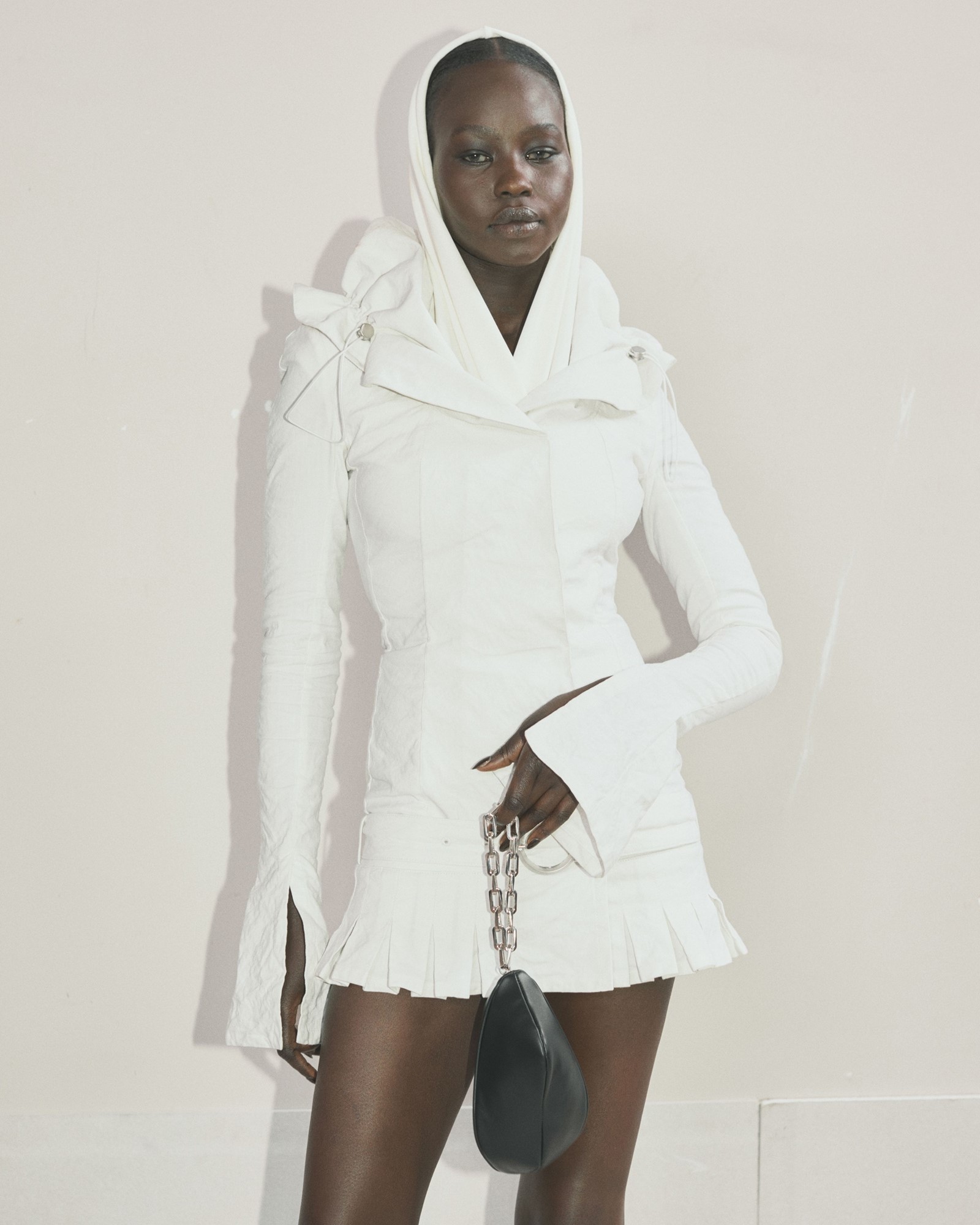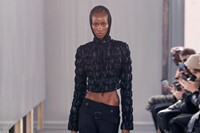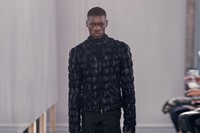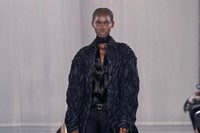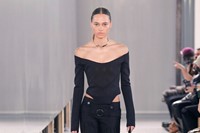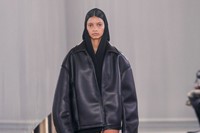There’s a joke in fashion that the never-ending rotation of creative directors at its major houses is akin to a game of musical chairs. Unlike the friendly childhood version in which everyone is invited to play, fashion’s bizarre rules seemingly only allow a select few to take part, while everybody else stands around watching.
It’s a particularly head-scratching conundrum when you consider the monumental success of Alessandro Michele at Gucci and the now mononymous Demna at Balenciaga, who both took up their roles all the way back in 2015. Seemingly unwilling to open the doors to new faces, there are however a handful of names breaking through, perhaps signalling a change, including the late Virgil Abloh at Louis Vuitton menswear, Daniel Lee (prior to his surprise breakneck exit from Bottega Veneta), and London’s wunderkind Maximilian Davis, who recently took over the reins at Salvatore Ferragamo.
Serhat Işık and Benjamin A. Huseby joined this roster last summer, when they were unveiled as the new creative directors of fabled Italian brand Trussardi. A welcome surprise, the heritage house is a million miles away from the sweaty nightclub dancefloors of Berlin that birthed the duo’s own label, GmbH. “We saw it as a challenge of speaking to a broader and bigger audience … somebody described it to us as fashion’s last fallen angel,” Huseby tells AnOther. “There are very few untapped brands left that have this kind of history. It’s one of the oldest in Italy and that was an opportunity,” Işık adds.
Founded in 1911 as a leather glove manufacturer, Trussardi has become synonymous with luxury leather goods and its signature greyhound motif. The brand’s more recent history is harder to recall, following a number of lukewarm collections and rotation of design leads including Milan Vukmirovic, Umit Benan, and Gaia Trussardi, the latter who presented the brand’s final runway show in 2018. Until now, Trussardi was an untapped goldmine, not dissimilar to Bottega Veneta before Lee revitalised it.
So, who better to defibrillate the defunct brand than the Berlin-based duo? The past three seasons have seen them hit their stride at GmbH, culminating in their brilliant Autumn/Winter 2022 collection. A heady combination of formalwear and sleaze – think sharp modern tailoring paired with kinky over-the-knee boots – it also nodded to their Arabic heritage via traditional garments and swirling calligraphy rendered as a print.
But where to begin? Trussardi’s last outing in 2019 saw a series of left-field collaborators – including Giulia and Camilla Venturini of Medea and the anonymous fashion duo behind Checking Invoices – delve into the house’s archive, but the pair have now decided to forge a new direction free from the pressure of the past. “We felt that we could work very freely without too much constraint,” Huseby says of their approach. “It’s a blank slate and we have the opportunity to build the brand in a different way than we have at GmbH.”
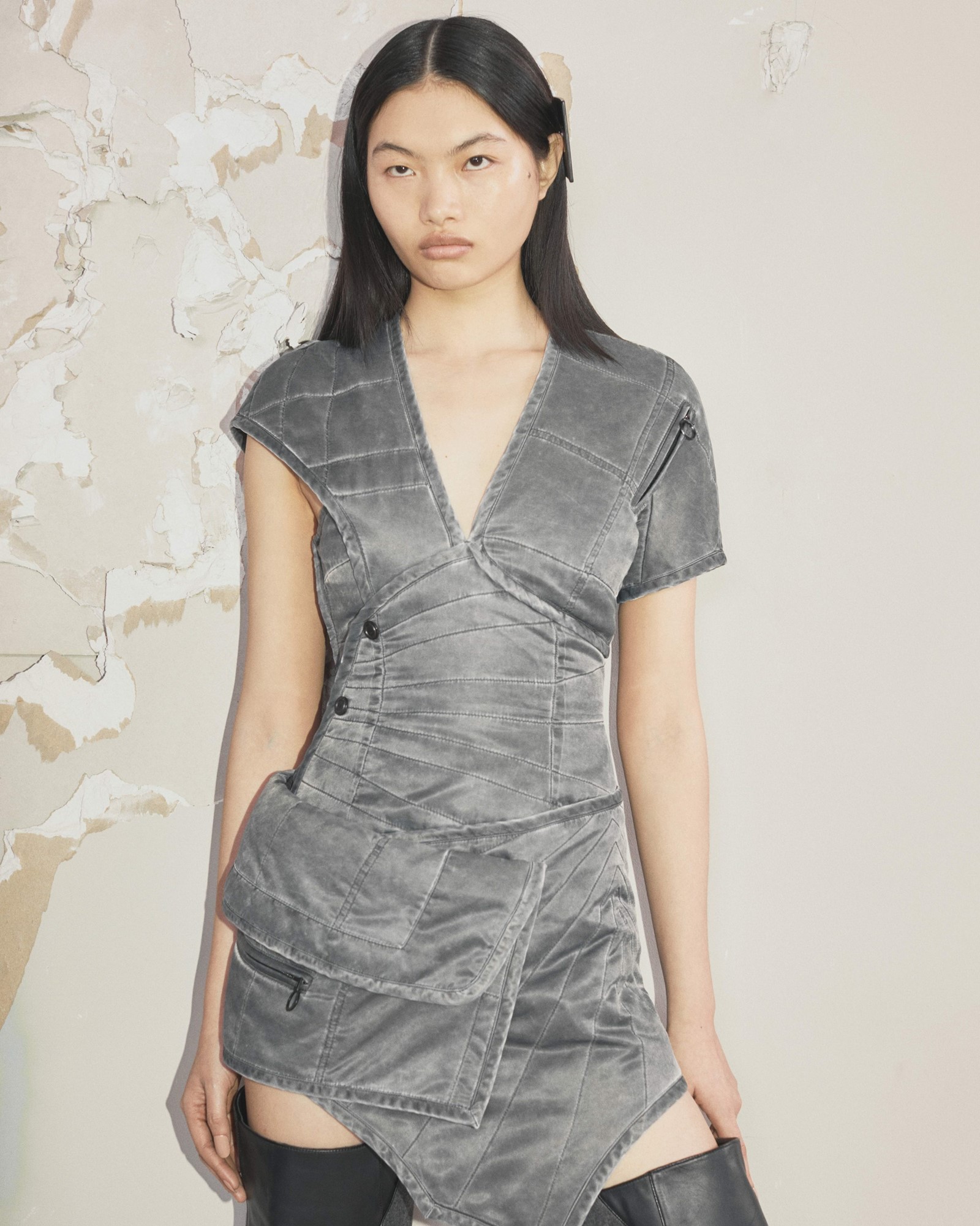
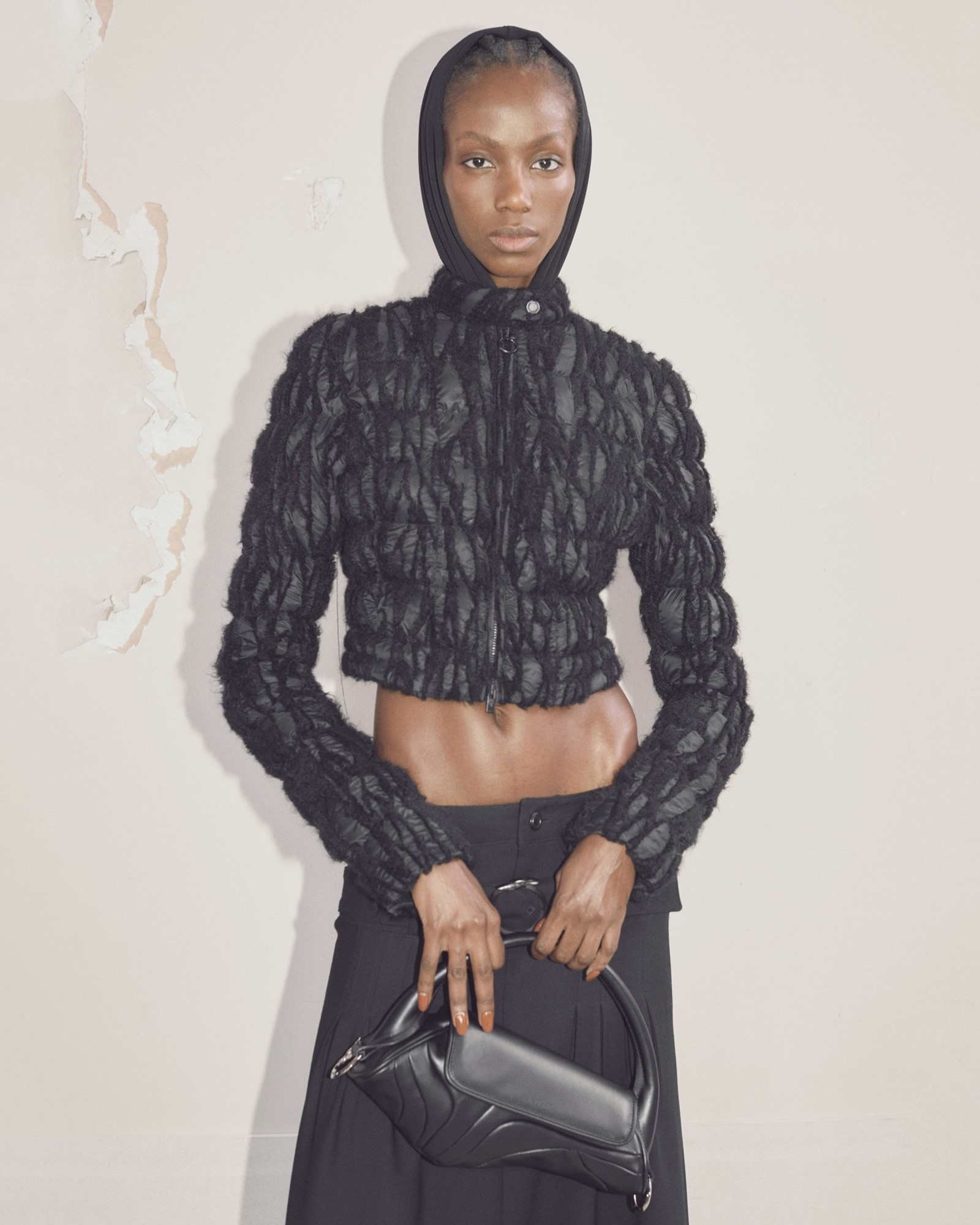
Making their debut at the end of last month during Milan Fashion Week, the show was closer to a shot of adrenaline straight to the heart rather than a breath of fresh air, with an ear-splitting soundtrack that literally shook the Mylar-covered walls lining the runway. The openers, a pair of piumino jackets – something of a staple for European city dwellers – for him and (cropped and hooded) for her signalled the passing of the Trussardi torch. “It was an item we were first almost repulsed by, but then learned to love during the process,” shares Işık. “A lot of people speak about the idea of Milanese chicness, which maybe applies to an older generation. For us, the face of Milanese fashion is street fashion, so it was about the clash between fantasy and reality.”
The fantasy the pair yearned for was manifested in silhouettes reminiscent of the Renaissance era – nipped waists with voluminous bustles under sleek dresses and armour-like shearling details. With a restrained, almost entirely black colour palette – so as not to distract from the careful cuts – the pièce de résistance was a dramatic medieval-meets-Matrix coat-gown on runway maven Debra Shaw, who closed the show. “We can have very fantastical ideas of things that are a bit out there, but at the end of the day, we always like the idea that it is a real person and we have to understand who they are. You can imagine seeing them walking on the street in Milan,” says Huseby. “It’s almost like ‘choose your fighter’ for real-life purposes,” adds Işık.
The instinctively inclusive attitude we’ve come to expect at GmbH was just as apparent at Trussardi too – curated in collaboration with casting director Affa Osman – naturally featuring trans, plus-size, and hijabi models, something the city’s stalwarts will hopefully follow suit on. This attitude permeates the brand beyond the end of the runway too. “We had to establish an atelier because there wasn’t one and bringing in a much more diverse team was important because there isn’t much, especially in Italy,” Huseby says. “That’s always been a pillar of ours and something that comes naturally, it’s always been about more than just fashion.”
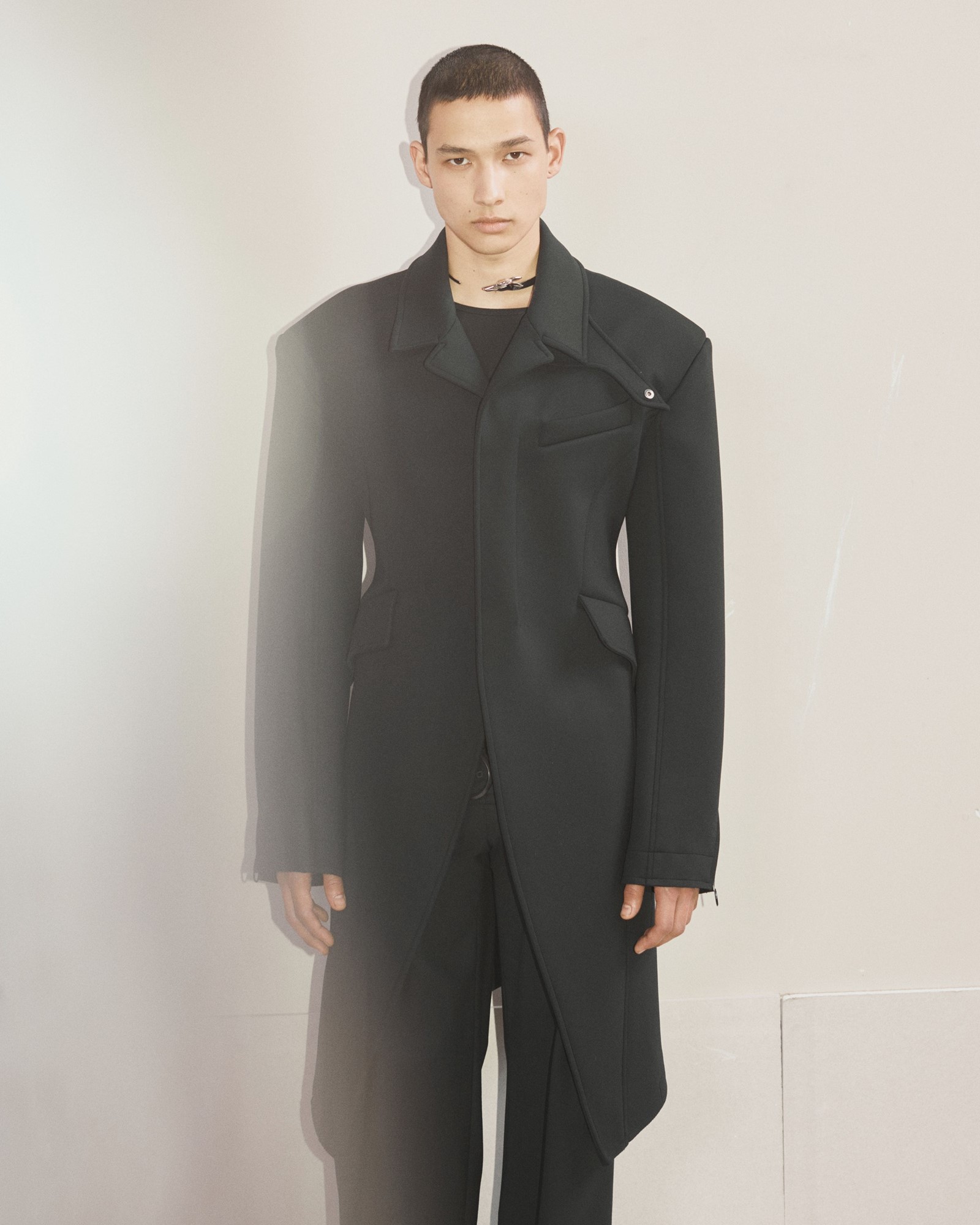
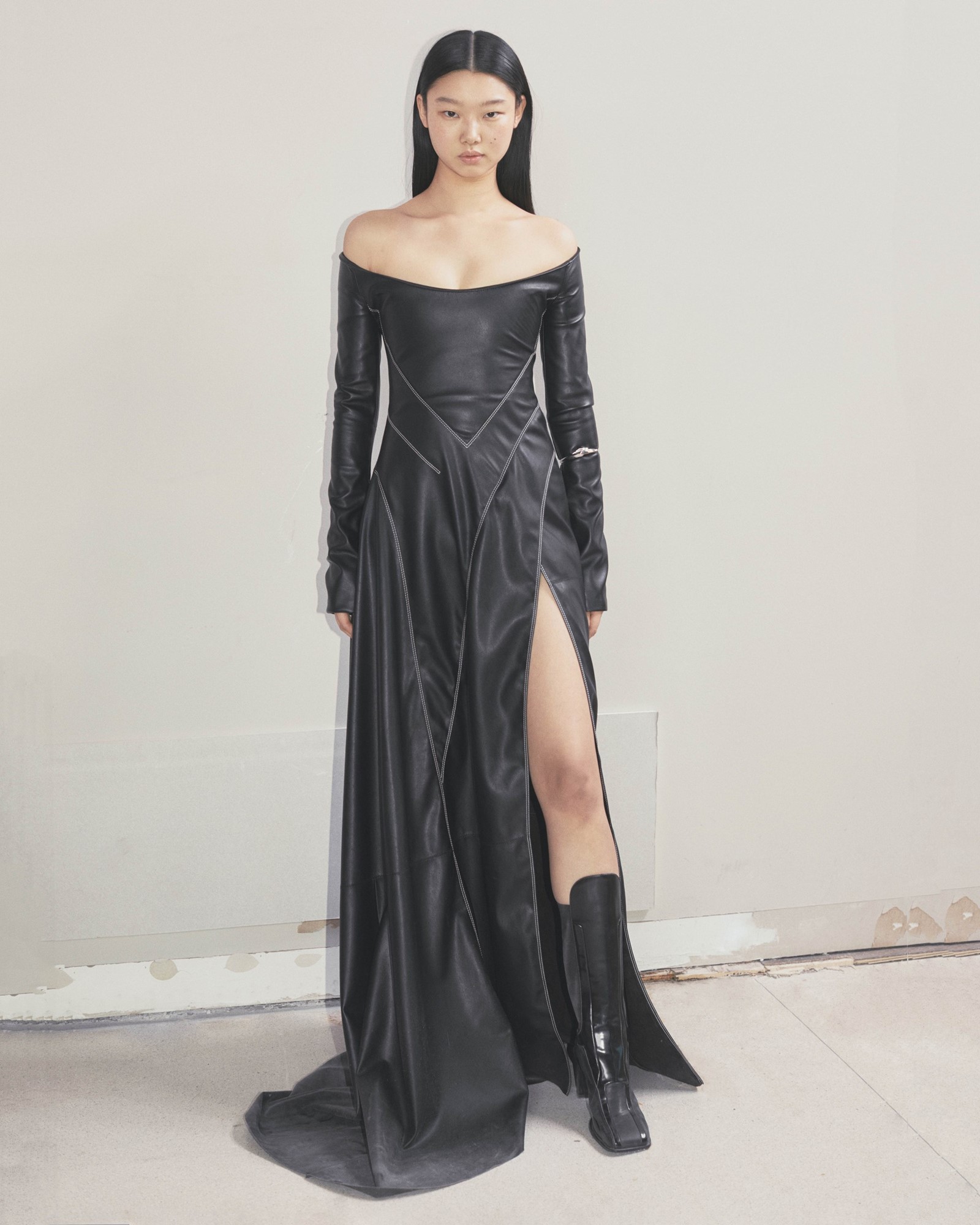
Their motivations are not often proffered, allowing their designs to do the talking instead. “There are codes we talk about, but other codes we don’t disclose that are important to us and have a lot to do with our upbringing and religious backgrounds,” explains Işık. “There was a take on modesty and the hijab and how we applied that to both men and women. The shape of the skirt for look one is very much like skirts that our family members would wear to the mosque, but there’s an exposed midriff, so it plays with modesty, there’s a lot of layers.”
“We never really knew how to deal with the topic of the headscarf because it’s so big,” Huseby adds. “Having it on both men and women was a very important statement for us that we haven’t spoken about that much because not everyone gets it.”
The debut came at an undoubtedly solemn time, a shadow cast over the A/W22 shows with the ongoing war in Ukraine, leaving designers and attendees alike with an uncomfortable feeling. The news placed a magnifying lens over what the role of a fashion label should be in 2022. “It’s never been only about clothes for us, it has always been a tool to reach people and I think fashion has that ability in a comparable way to music,” muses Işık. “That has always inspired us to work in fashion and it will always be a driving force for us. Personally, if that didn’t exist and I didn’t feel like I had a purpose attached to making clothes, I wouldn’t be interested in fashion.”
“A lot of people speak about the idea of Milanese chicness, which maybe applies to an older generation. For us, the face of Milanese fashion is street fashion, so it was about the clash between fantasy and reality” – Serhat Işık
“I remember being interviewed backstage after our second show in Paris and being asked if we were scared of being political, that was just five years ago,” reflects Huseby. “The world has changed a lot since then, but it’s crazy to think that being outspoken politically was controversial five years ago and now you’re almost cancelled if you don’t have an opinion on things.” No matter your stance, it’s almost impossible to ignore the cacophonous cries on social media to denounce all the evils of the world, or just cancel fashion week entirely.
Yet, the pair remain steadfast in their positivity and continue to appreciate the platform they’ve been given. It’s a difficult line to toe, and whether or not it becomes clearer with time or not, they’re making the most of it. “What’s really exciting for us with the house is the immense potential it has,” Işık enthuses. “There’s a restaurant, a cafe, a bar, there’s furniture too – so many things that we still have to tap into and create the language of the brand. It’s like a playground of experiences and opportunities to connect to people and that’s what we want to do. We don’t want to be weighed down with everything, but create stories and reach people in a larger way.”
With work already underway for their next collection, for now, they’re focusing on the small victories. “Creating beautiful shows, images, and moments where people gag in the front row is what I love about fashion. It’s not all politics and having serious conversations, we like to bring excitement,” concludes Huseby.
“Emotions are very, very important,” Işık agrees. “We put a lot of emotion into the work and that’s what fashion is all about for us.”
